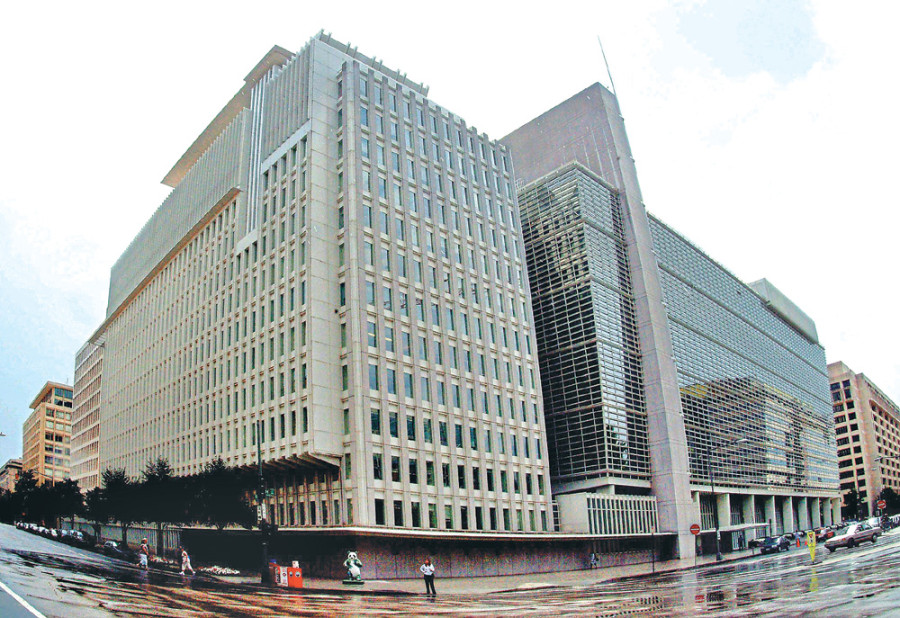Money
WB says Nepal could face slowdown in remittances
In what could be an ominous sign for the economy, a World Bank (WB) report has stated Nepal could face a slowdown in remittances.
In what could be an ominous sign for the economy, a World Bank (WB) report has stated Nepal could face a slowdown in remittances.
The “Nepal Development Update” released on Wednesday states a prolonged contraction in the departure of migrant workers is an early sign of a potential slowdown in remittances in Nepal.
The report’s focus chapter titled “Remittances at Risk” highlights a possible near-term risk of a slowdown in remittances. “A potential slowdown in remittances poses a significant near-term risk to Nepal because of its outsized role in the Nepalese economy,” states the report.
Remittance inflow, which jump in the post-earthquake period, has slowed down by January 2016. In three months to April 2016, remittances have contracted by 5.3 percent (in dollar terms) compared to the same period of the previous year.
The slowdown in the remittance inflow has coincided with a sharp decline in the outflow of Nepali migrant workers. Following the Gorkha earthquakes, the outflow of migrant workers has declined significantly for 10 months in a row, with a contraction of 25 percent by April 2016.
This is one of the steepest and longest decline of migrant worker departure, which has exceeded the contraction in 2009. A weaker demand for workers from oil/commodity producing host countries, particularly gulf countries and Malaysia, is likely to have contributed to this decline. The dispute over the free-visa, free-ticket scheme also hit departures to Malaysia.
A small decline in remittance can have large macroeconomic impacts, according to the World Bank. “To be clear, we are not expecting a rapid drop in remittances in Nepal. However, given the large size of remittances, even a small slowdown in remittance for Nepal can have a broad macroeconomic, poverty and fiscal impacts,” states the report.
In the past 10 years, remittances have increased substantially, equalling 30 percent of the country’s GDP. “The reality is that remittances play a pivotal role in the Nepali economy,” said Takuya Kamata, the World Bank’s country manager for Nepal. “Remittances are nearly 10 times higher than foreign aid and 2.5 times larger than the total exports.”
Given remittances enable consumption-centric structure of the Nepali economy and the government’s reliance on taxation of imports as a major source of revenue, even a modest contraction in remittance would have adverse effects on growth, fiscal and external accounts, in addition to curtailing economic opportunities for Nepalis abroad, according to World Bank.
According to Shanker Sharma, former vice chairman of National Planning Commission, due to Nepal’s large reliance on trade-related taxes, a possible slowdown in remittances will also slow revenue collection. “Therefore, the slowdown in remittances would not only slow economic growth, but also affect poverty reduction and public revenues as well,” Sharma said.
In a hypothetical scenario of a 10 percent drop in remittance, the growth in Nepal could drop by up to 3 percentage points compared to the baseline forecast, according to the report. “Should a slowdown in remittances occur, appropriate monetary and fiscal policy responses are required as well as enhanced supervision of the financial sector,” said Damir Cosic, the World Bank’s senior country economists for Nepal and lead author of the report.
Nepal Rastra Bank (NRB) statistics also suggest the growth rate of remittance is declining. Remittance growth Nepal has been declining for six months straight even though the total amount of funds received has been swelling, the NRB said in its macroeconomic report published on Wednesday.
The pace of the growth started slowing down in mid-December 2015, recording a continuous decline from 26 percent to 19.26 percent in mid-January, 15.90 percent in mid-February, 13.91 percent in mid-March, 12.71 percent in mid-April and 11.87 percent in mid-May.




 19.12°C Kathmandu
19.12°C Kathmandu














